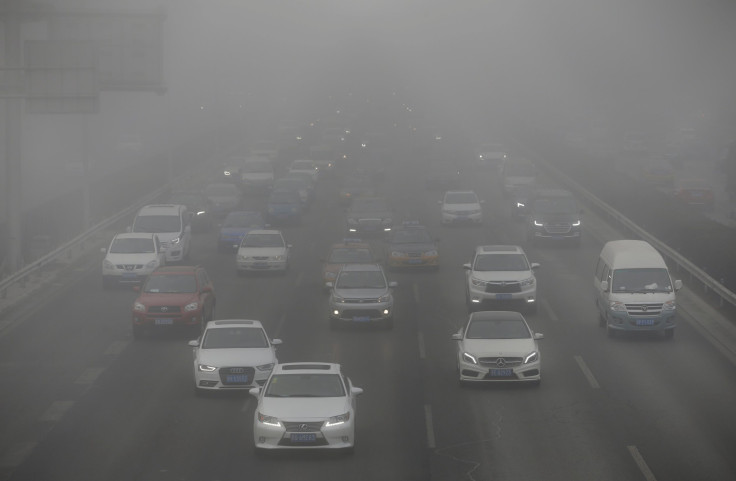Is Pollution Dangerous And How Does It Affect People? Unhealthy Environments Kill 1.7 Million Children A Year; Electronic Waste On The Rise And Linked To Diseases In Minors, WHO Reports

Pollution leads to 1.7 million child deaths per year, two World Health Organization reports released March 6 revealed. The studies confirmed that pollution is dangerous and clarified the ways in which it affects people, particularly children.
More than one in four deaths of minors under age five is linked to unhealthy environments, such as indoor and outdoor air pollution, second-hand smoke, unsafe water, bad sanitation and poor hygiene, the organization said.
"A polluted environment is a deadly one — particularly for young children," WHO Director-General Dr. Margaret Chan said in a statement. "Their developing organs and immune systems, and smaller bodies and airways, make them especially vulnerable to dirty air and water."
Many of the most common causes of death among children ages one month to five years were diarrhea, malaria and pneumonia. Those deaths can be prevented by reducing environmental risks, such as access to safe water and clean cooking fuels, the report Inheriting a Sustainable World: Atlas on Children’s Health and the Environment found. Infants and pre-schoolers who are exposed to air pollution and second-hand smoke have a higher risk of getting pneumonia in their childhood, as well as other lifelong risks of respiratory diseases such as asthma, heart disease, stroke and cancer. The report added that harmful exposure can start in the womb, increasing the risk of premature birth. Breastfeeding could also expose infants to chemicals.
Electronic Waste (E-Waste) Dangerous For Children
Emerging environmental hazards include improperly recycled electronic and electrical waste, such as mobile phones. The e-waste exposes children to toxins which can lead to reduced intelligence, attention deficits, lung damage and cancer, the WHO said. Electronic and electrical waste is expected to increase by 19 percent between 2014 and 2018.
Climate Change And Hazardous Chemicals
Global warming is also affecting children, as temperatures and levels of carbon dioxide rise and spurs pollution growth.
“In households without access to basic services, such as safe water and sanitation, or that are smoky due to the use of unclean fuels, such as coal or dung for cooking and heating, children are at an increased risk of diarrhea and pneumonia,” the WHO explained.
Kids are also exposed to dangerous chemicals through food, water, air and products around them. Chemicals, such as fluoride, lead and mercury pesticides, persistent organic pollutants and others found in products, make their way into the food chain.
The WHO report Don't Pollute My Future! The Impact of the Environment on Children's Health , listed the five top causes of death in children under five attributed to the environments:
570,000 deaths due to respiratory infections, such as pneumonia and second-hand smoke.
361,000 child deaths due to diarrhea linked poor access to clean water, sanitation, and hygiene.
270,000 one-month old infants die from conditions, including prematurity, which could be prevented through access to clean water, sanitation, and hygiene.
200,000 child deaths due to malaria which could be prevented through environmental actions, such as reducing breeding sites of mosquitoes or covering drinking-water storage.
200,000 children die from accidental injuries attributable to the environment, such as poisoning, falls, and drowning.
The WHO said governments should make the environment safer by improving water and sanitation and better hygiene. The organization recommends clean fuel for heating and cooking, no mold or pests in housing, as well as the removal of unsafe building materials and lead paint. Schools should provide safe sanitation and hygiene, less pollution and promote good nutrition, the WHO said. The organization also recommends more green spaces, safe walking, cycling paths, use public transportation instead to reduce emissions and to lower the use of hazardous pesticides in agricultural activities. As for corporations, the industrial sector should better manage hazardous waste and reduce the use of harmful chemicals, the WHO said.
© Copyright IBTimes 2024. All rights reserved.




















